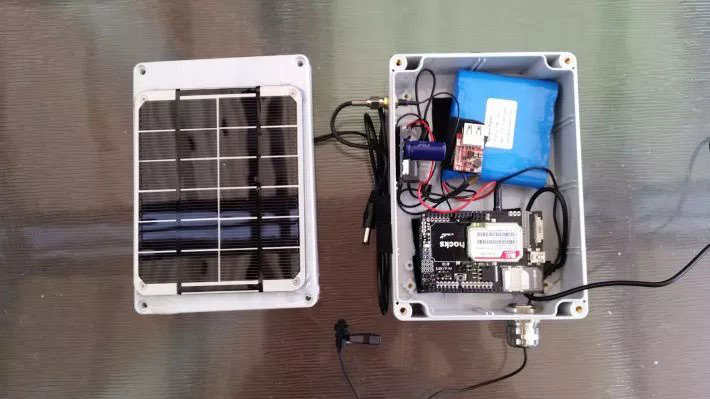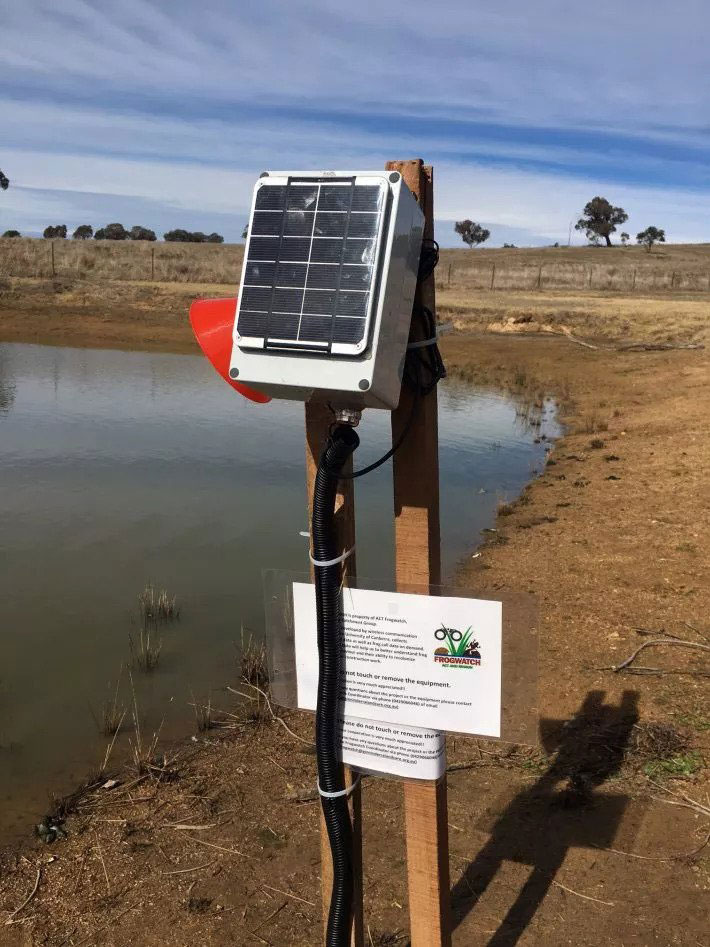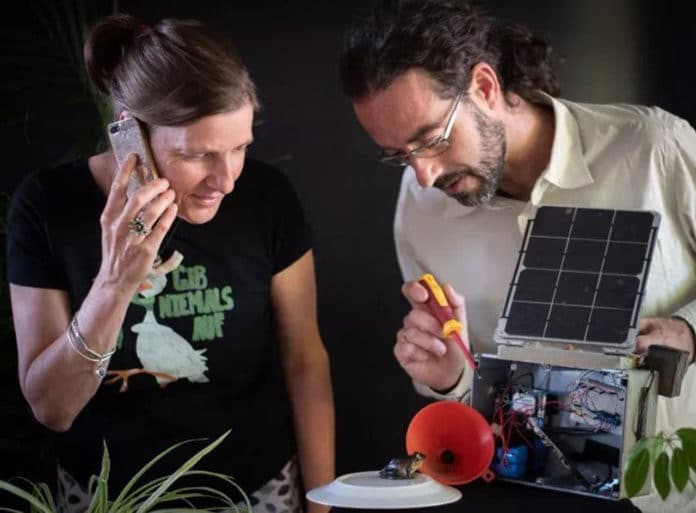Acoustic field observations of vocal animal species are an important tool for a wide range of ecological studies. Collecting animal sounds, e.g., during the breeding season, traditionally involves surveying a study site in person.
However, on‐site acoustic monitoring is restricted by the number of observations that an observer can make within a given time frame and requires extensive expert travel to and from survey sites, especially when they are at remote locations.
To address this, scientists from the University of New South Wales (UNSW) Canberra and the University of Canberra, have devised a device called ‘FrogPhone,’ a world’s first solar-powered remote survey device that relays environmental data to the observer via text messages. The device allows scientists to call up a frog survey site and monitor them in the wild.

Through this device, scientists introduced a new concept that allows researchers to “call” a frog habitat any time, from anywhere, once the invention has been installed.
The device has been developed in collaboration with the Australian Capital Territory (ACT) and Region Frogwatch Program, and the Australian National University.
This new platform is not only subject to the availability of 3G/4G cellular mobile data coverage for remote locations in areas without phone coverage. A satellite communications module can also be easily integrated into the device. It capitalizes on the characteristic wideband audio of mobile phones, which acts as a carrier for frog calls. What’s more interesting is that scientists can make real-time frog calls with clear sound quality and minimal background noise, allowing users to identify the calls of different frog species.
Lead author Dr. Adrian Garrido Sanchis, Associate Lecturer at UNSW Canberra, said, “We estimate that the device with its current microphone can detect calling frogs from a 100-150m radius. The device allows us to monitor the local frog population with more frequency and ease, which is significant as frog species are widely recognized as indicators of environmental health.”

It is powered by a battery linked to a potent solar panel, which allows maintenance-free long‐term operation of the device. It also contains digital thermal sensors to automatically collect real-time environmental data such as water and air temperature.
The system ultimately acts as a mobile phone that accepts incoming calls independently after three seconds. Furthermore, it offers the possibility of making video calls and sending text messages.
The ACT and Region Frogwatch coordinator and co-author, Anke Maria Hoefer said, “The FrogPhone will help to drastically reduce the costs and risks involved in remote or high-intensity surveys. Its use will also minimize potential negative impacts of human presence at survey sites. These benefits are magnified with increasing distance to and inaccessibility of a field site.”
“The spectrogram comparison between the FrogPhone and the standard direct mobile phone methodology in the lab, for the calls of 9 different frog species, and the field tests have proven that the FrogPhone can be successfully used as a new alternative to conducting frog call surveys.”
Lead author Garrido Sanchis emphasized that “In densely vegetated areas the waterproof case of the FrogPhone allows the device to be installed as a floating device in the middle of a pond, to maximize solar access to recharge the batteries.”
Dr. Garrido Sanchis said, “While initially tested in frogs, the technology used for the FrogPhone could easily be extended to capture other animal vocalization (e.g., insects and mammals), expanding the applicability to a wide range of biodiversity conservation studies.”
Journal Reference
- Sanchis, A. G., Bertolelli, L., Hoefer, A. M., Alvarez, M. Y., & Munasinghe, K. (2020). The FrogPhone: A novel device for real-time frog call monitoring. Methods in Ecology and Evolution, 11(2), 222-228. DOI: 10.1111/2041-210X.13332
